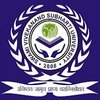Assistant Lecturer
20+ Assistant Lecturer Interview Questions and Answers

Asked in Aakash Educational Services

Q. In the plant kingdom, are all plants autotrophs, or are there any exceptions?
Most plants are autotrophs, but there are some exceptions such as parasitic plants.
Most plants are autotrophs, meaning they can produce their own food through photosynthesis
However, there are exceptions like parasitic plants that obtain nutrients from other plants
Some examples of parasitic plants include mistletoe and dodder

Asked in Aakash Educational Services

Q. Is a cell wall present in the kingdom Protista?
No, cell wall is not present in kingdom Protista.
Kingdom Protista includes diverse organisms like algae, protozoa, and slime molds.
These organisms have cell membranes but lack cell walls.
Some examples of protists include Euglena, Paramecium, and diatoms.
Assistant Lecturer Interview Questions and Answers for Freshers

Asked in Aakash Educational Services

Q. What is the difference between fungi and protists?
Fungi are eukaryotic organisms that obtain nutrients through absorption, while protists are a diverse group of eukaryotic organisms that do not fit into other kingdoms.
Fungi are heterotrophic, while some protists can be autotrophic.
Fungi have cell walls made of chitin, while protists may have cell walls made of cellulose or other materials.
Fungi reproduce through spores, while protists can reproduce asexually or sexually.
Examples of fungi include mushrooms and yeast, while ex...read more

Q. What is surveying? What are the equipments of surveying?
Surveying is the process of measuring and mapping the earth's surface.
Surveying is used in various fields such as construction, engineering, and land development.
The equipments of surveying include theodolites, total stations, GPS receivers, and levels.
Theodolites are used to measure angles and distances, while total stations combine theodolites with electronic distance measurement.
GPS receivers use satellite signals to determine precise locations, and levels are used to meas...read more

Asked in Aakash Educational Services

Q. Which kingdom includes fungi?
Fungi are classified in the kingdom Fungi.
Fungi are eukaryotic organisms
They obtain nutrients through absorption
Examples include mushrooms, yeast, and molds

Q. What is transportation? explain the transportation uses?
Transportation is the movement of people, goods, or animals from one place to another using various modes of transportation.
Transportation is essential for economic growth and development.
It includes modes like road, rail, air, water, and pipeline.
Examples of transportation uses include commuting to work, shipping goods, and traveling for leisure.
Transportation also plays a crucial role in emergency services and disaster relief efforts.
Assistant Lecturer Jobs




Asked in Aakash Educational Services

Q. What are the effects of the greenhouse effect?
The greenhouse effect is the trapping of heat in the Earth's atmosphere by greenhouse gases, leading to global warming.
Greenhouse gases such as carbon dioxide and methane trap heat in the Earth's atmosphere
This leads to an increase in global temperatures, known as global warming
Effects of global warming include melting ice caps, rising sea levels, and changes in weather patterns

Asked in University of Gondar

Q. Briefly explain the working principles and applications of nuclear imaging modalities.
Nuclear imaging modalities use radioactive tracers to create images of internal body structures for diagnostic purposes.
Nuclear imaging modalities include PET (Positron Emission Tomography) and SPECT (Single Photon Emission Computed Tomography).
Radioactive tracers are injected into the body and emit gamma rays, which are detected by a gamma camera to create images.
PET scans are used to visualize metabolic processes in the body, while SPECT scans are used for functional imagin...read more
Share interview questions and help millions of jobseekers 🌟


Asked in Aakash Educational Services

Q. How would you explain a particular topic?
I will explain a particular topic by breaking it down into smaller parts and using relatable examples.
Identify the key concepts and break them down into smaller parts
Use relatable examples to help the audience understand
Encourage questions and feedback to ensure understanding

Asked in Aakash Educational Services

Q. Mode of nutrition in kingdom monera
Mode of nutrition in kingdom Monera is primarily through absorption.
Monera obtain nutrients through absorption of organic and inorganic substances from their environment
They do not have specialized structures for ingestion like digestive systems
Examples include bacteria and cyanobacteria

Asked in Aakash Educational Services

Q. How would you explain this concept to students in a simple way?
I will use simple language, real-life examples, visual aids, and encourage questions to explain concepts to students.
Break down complex concepts into smaller, easier to understand parts
Use real-life examples to relate the concept to something familiar to the students
Utilize visual aids such as diagrams, charts, or videos to enhance understanding
Encourage questions and discussions to ensure students grasp the concept fully

Asked in Aakash Educational Services

Q. Why are fungi placed higher than protists in the classification system?
Fungi are placed higher above protists due to their unique cell wall composition, mode of nutrition, and reproduction.
Fungi have chitin in their cell walls, while protists do not.
Fungi are heterotrophic and absorb nutrients from their surroundings, while protists can be autotrophic or heterotrophic.
Fungi reproduce through spores, while protists have various modes of reproduction such as binary fission or conjugation.

Asked in University of Gondar

Q. Explain the working principle of OCT (optical coherence tomography).
OCT is a non-invasive imaging technique that uses light waves to create cross-sectional images of tissues.
OCT uses low-coherence interferometry to measure the time delay of light reflected from different depths within a sample.
The interference pattern is analyzed to create a high-resolution 2D or 3D image of the tissue.
OCT is commonly used in ophthalmology to visualize the retina and diagnose eye conditions like macular degeneration.
It is also used in cardiology, dermatology,...read more

Asked in Infosys

Q. What is Artificial Intelligence?
Artificial intelligence is the simulation of human intelligence in machines that are programmed to think and learn like humans.
AI involves creating intelligent machines that can perform tasks that typically require human intelligence.
It includes various techniques such as machine learning, natural language processing, and computer vision.
AI is used in various fields such as healthcare, finance, transportation, and entertainment.
Examples of AI include virtual assistants like S...read more

Asked in Aakash Educational Services

Q. What is the greenhouse effect?
Greenhouse effect is the process by which radiation from a planet's atmosphere warms the planet's surface.
Greenhouse gases like carbon dioxide and methane trap heat in the Earth's atmosphere
This leads to an increase in global temperatures, known as global warming
Human activities, such as burning fossil fuels, contribute to the enhanced greenhouse effect

Asked in Aakash Educational Services

Q. Different types of vectors, zero vector
Vectors are quantities that have both magnitude and direction. Zero vector has a magnitude of zero and points in no specific direction.
Vectors are quantities with magnitude and direction.
Zero vector has a magnitude of zero.
Zero vector points in no specific direction.
Examples: displacement, velocity, force

Asked in Aakash Educational Services

Q. Teach a topoc from Physical Chem/ Organic
Teaching topic from Physical Chemistry/Organic Chemistry
Explain the concept of chemical equilibrium in Physical Chemistry
Discuss the principles of organic reactions and mechanisms
Illustrate the concept of stereochemistry in Organic Chemistry

Asked in Aakash Educational Services

Q. What is the percentage of PO2 in exhaled air?
Exhaled air contains lower PO2 than inhaled air due to gas exchange in the lungs.
Inhaled air has a PO2 of about 160 mmHg at sea level.
Exhaled air typically has a PO2 of around 120 mmHg.
The difference is due to oxygen being absorbed into the bloodstream.
Factors like altitude can affect the PO2 levels in both inhaled and exhaled air.

Asked in BYJU'S

Q. What is the difference between breathing and respiration?
Breathing is the physical process of inhaling and exhaling air, while respiration is the biochemical process of energy production in cells.
Breathing involves the mechanical movement of air in and out of the lungs.
Respiration occurs at the cellular level, converting glucose and oxygen into energy.
Breathing is a voluntary and involuntary action, while respiration is a biochemical process.
Example of breathing: Taking a deep breath before speaking.
Example of respiration: Cells us...read more
Asked in SGM College Karad

Q. What is data mining?
Data mining is the process of discovering patterns and insights from large datasets.
It involves using statistical and machine learning techniques to analyze data
Data mining can be used in various fields such as marketing, finance, and healthcare
Examples of data mining techniques include clustering, classification, and association rule mining

Asked in Aakash Hospital

Q. What is Euler's formula?
Eular is from the Latin word 'eulare' meaning 'to shout'.
Eular is from Latin origin
It means 'to shout' in Latin
It is not a commonly used term in modern English

Asked in Aakash Educational Services

Q. Projection of a vector
Projection of a vector is the component of a vector in the direction of another vector.
Projection of vector A onto vector B is given by (A dot B) / |B|
The projection of a vector onto itself is the vector itself
The projection of a vector onto a unit vector is the scalar projection of the vector

Asked in Accenture

Q. Tell me about yourself.
Interview Questions of Similar Designations
Interview Experiences of Popular Companies









Reviews
Interviews
Salaries
Users


















